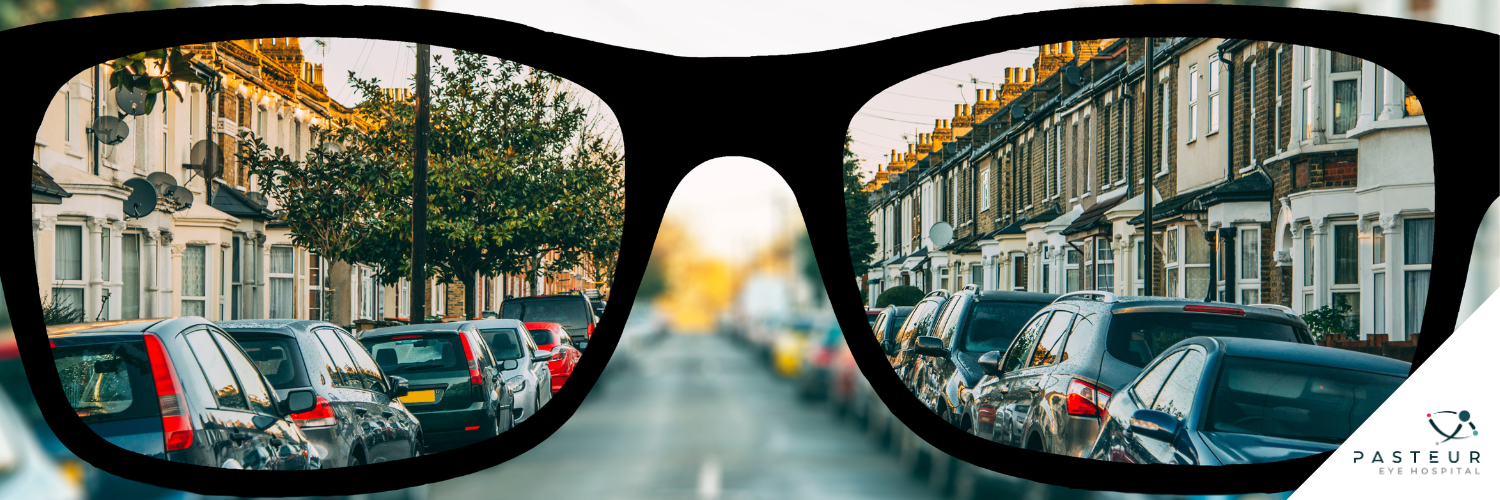Pasteur Eye Hospital
Eye Conditions
Contact Us

Do you ever struggle to see distant objects like highway signs until you’re practically right in front of them but have no problem reading a book up close?
If so, you likely have myopia, commonly known as near-sightedness. Your eye doctor can easily address this prevalent vision condition with eyeglasses, contact lenses, or even corrective surgery.

The culprit behind myopia lies in the structure of your eye. When your eyeball is too long, or the cornea (the transparent outer layer) is excessively curved, light entering your eye focuses incorrectly. Instead of focusing directly on the retina, the light-sensitive part at the back of your eye, the image lands in front of it, resulting in blurry distant vision. Doctors call this a refractive error.
While anyone can develop myopia, certain factors increase your chances:
Blurry distant vision is the most common symptom, but you might also experience:

There are two main types of myopia:

A comprehensive eye exam conducted by your eye doctor can diagnose myopia.
During the exam, you might undergo:
If you have myopia, your prescription for glasses or contacts will be a negative number. The more negative the number, the stronger your lenses will need to be.

The goal of treatment is to help the eye focus light correctly on the retina, restoring clear vision. Here are the standard options:
Unfortunately, there is no permanent cure for myopia. However, the available treatments are very effective, often restoring vision to 20/20. Even with surgeries like LASIK, some vision correction might still be needed as one ages.
Pasteur Eye Hospital
Eye Conditions
Contact Us
© Copyright 2022 Pasteur Eye Hospital. All Rights Reserved.
No article or picture may be reproduced\published without the written consent of Pasteur Eye Hospital.
Managed with ❤️ by Cuberoo